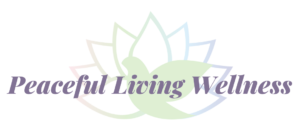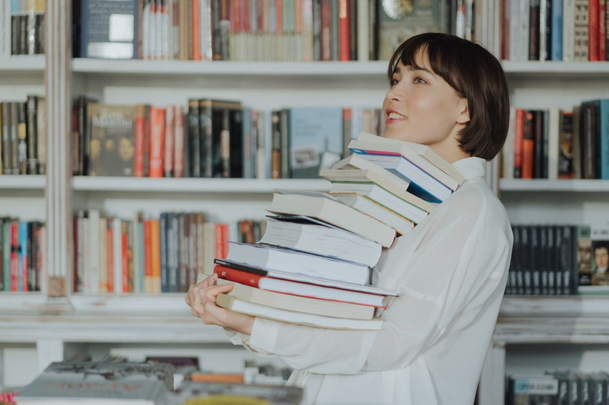I want to talk about a kind of clutter that you might be struggling with — and that is information clutter. Specifically, “just-in-case-information,” which is information we are only consuming but not using. We are accumulating it just in case we will need it one day.
This is similar to when you keep physical items in your home that you never use but you can’t give away, because what if you’ll need it one day?
Don’t have time to read? Listen to this info on the go on my podcast here.
The “just-in-case-clutter” represents a scarcity mindset. When it’s just-in-case-information, this often happens to people with a learner theme. These people have a great desire to learn and want to continuously improve.
The process of learning, rather than the outcome, excites them. The downside is, too much information is also clutter.
When we review the categories of clutter:
– things you don’t use or love
– things that are untidy or disorganized
– too many things in too small a space
– anything unfinished.
…we can see that information clutter checks 3 out of the 4 categories:
Category 1: information that we love but don’t use
Category 3: too much information for our small brain or to be able to take action on
Category 4: a lot of unfinished information, meaning information we haven’t done anything with (yet) which goes with the first point, we love it but don’t use it.
Just like with any clutter, information clutter is costing us a lot of time, energy and yes even money. But on top of it it’s also costing us clarity and focus, and creates overwhelm.
If you are still a bit confused by what I mean with information clutter, here a few examples:
- you sign up for lots and lots of email newsletters and read all the emails but don’t use the information. If you sign up for the email newsletters and don’t read the emails then it’s mostly digital clutter, if you print out all the emails to read them later then we are also creating lots of paper clutter. But if we read the email but don’t do anything with it and only consume it, then it’s information clutter
- when we are outlining a project and are watching Youtube videos about all the steps involved without putting anything into action and then move on to another project
- when we are reading books or signing up for online courses and programs out of fear of missing out (the famous FOMO) even though we are not at a point in our business where we actually need that program or information
So why is this just-in-case information a bad thing? Think about it:
1) Filling our brain with information that is not relevant to what we want and need to do right now leaves no time, energy, focus and brain space for the things that we do need to do or know. It leads to overwhelm and confusion.
2) It’s all passive and not active or creative, we’re using all our time and energy for consuming instead of producing and creating. We are trying to fill an already full glass with more, it overflows but we are just filling in more and more
3) Once we are ready to take action we will need to read that book or blog post again or go through that online course again (if we ever did it in the first place) because we were not able to retain the information, so we need to invest time and energy a second time, hopefully this time we are taking action
4) Depending on how much time has passed the information might not even be relevant anymore and we have to spend more time, energy and money to obtain the updated information
5) We complain that we have no time but we spend the time we have on information that we don’t need or use (yet) which in turn makes it even more true that we have not enough time and the sad part is, this all keeps us from doing what we really want to do
Information Clutter drains our energy, fills up our mental space, robs us of time that we could have used to produce or create something, or could have spent with family and friends. it might take up digital space on your computer and phone, and it costs you money that you might or might not have.
But most of all it could be wasted time because unless we are applying what we’re learning or reading we will forget it fairly quickly again. We might just understand the information for a short time period, usually while we are reading it. But we never get to the point where we know it, because knowing something only happens when we take action. After we take action we know it, it’s not just a mental concept but we have embodied the information, we know it in our bones or cells.
If you can see yourself in this too, buying and reading books, buying and going through online courses but then not implementing what you’ve learned I see you. It’s very hard these days as we are bombarded with information, daily new interesting books are being published and new (online) courses are launched and we are experiencing FOMO if we don’t jump on the hype and consume.
One thing I noticed, there is another reason why we want to read more, learn more and consume more and that is we procrastinate with taking action because it feels scary to do what we would need to do. So we rather tell ourselves we need to read more and learn more first, it feels productive while it’s counterproductive.
This reading and learning just in case is due to a scarcity mentality. But what we actually really need to be scared of is wasting time, energy, and money on things just-in -case instead of just-in-time.
I have three tips for you on how you could prevent information clutter
Just-in-time learning
Meaning only allowing yourself to read or learn about the things that you are in the process of doing right now, that is relevant to you and your project right now, that is necessary in order to take the next step to complete the project.
The 20% itch-rule
I actually heard this tip on an episode of Pat Flynn’s Smart Passive Income. It means allowing yourself to use only 20% of your time to explore and experiment with new things, 20% of time to read books and articles that have nothing to do with what you are working on, only spend 20% of your “Learning Budget” on courses and books that are ‘just in case’ information.
Take action first and consume after
You can make a rule for yourself that you are only allowed to read some ‘just-in-case’ information once you took a certain amount of action with the information you already have and worked on moving a project forward.
As always, slowly train our decluttering muscles and don’t bite off too much but start small and collect some wins which leads to momentum. Pick one of these tips and start reducing your information clutter.
As a clutter clearing coach and practitioner I’ll never tell you to get rid of anything, not even your information clutter. What I do want to help you see is the effect clutter has on you, your life and your business.

CONNY GRAF
Conny Graf is a Swiss certified Expert in Finance & Accounting, a certified Clutter Clearing Practitioner, Astrologer, Coach, Podcaster and the founder and owner of From Chaos to Peace Consulting Inc.
She’s helping people create supportive, clutter-free environments in their home, office, files, and finances but more importantly, she helps them develop habits and systems that prevent clutter from creeping back in. Clutter Clearing is not just about purging and organizing, it’s about exploring and releasing the limiting beliefs we tell ourselves and the stories that keep us stuck in the past. Dealing with clutter brings us up-to-date with who we are right now and where we are heading in your life and business while being organized is simply a side-effect.
Her mission is to help people understand that decluttering is self-love, and a few minutes a day keep the clutter away. Come on a journey from chaos to peace with ease.
▪ WEBSITE ▪ INSTAGRAM ▪ FACEBOOK ▪ LINKED IN ▪ YOUTUBE ▪ PINTEREST ▪ THE PODCAST▪



